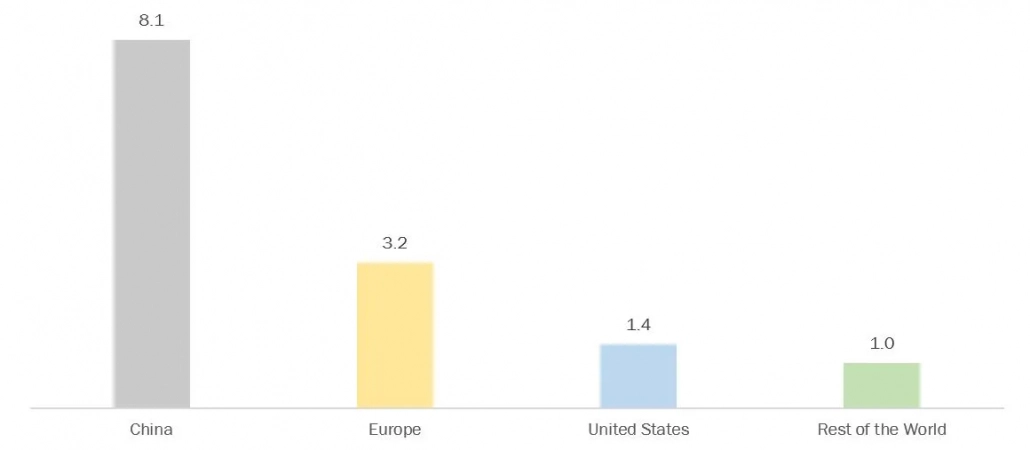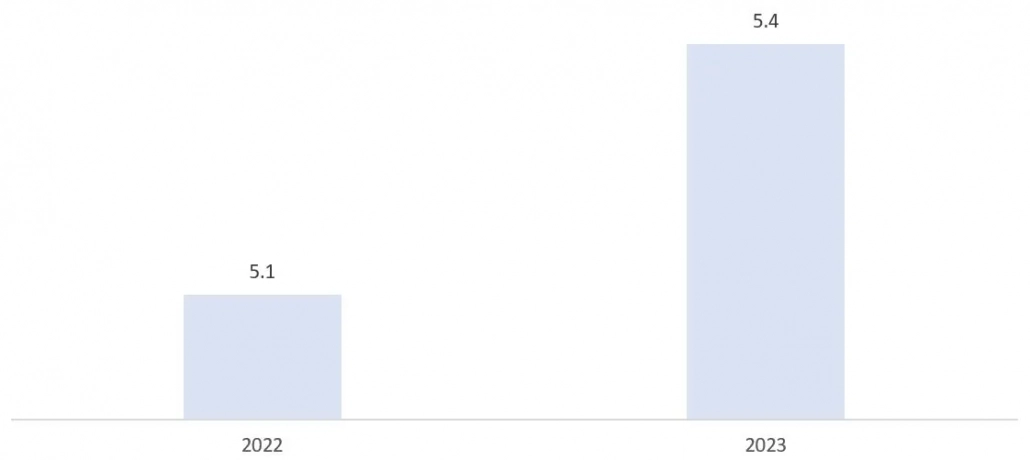Top 10 Applications of AC/DC Converters in Modern Electronics
A huge range of sectors and structures include AC-DC converters, which might be vital for the functioning of electronic devices, home appliances, motors, power distribution networks, and renewable strength structures. Basically, they serve the reason of changing AC voltage into DC one permitting the operation of DC gadgets and charging batteries.
AC-DC converters are integral inside the clean and dependable operation of power electronics systems in various fields and packages. They offer strength to DC loads or batteries which means that they produce a regular output voltage and enable green electricity transfer. Therefore, they may be essential components of severa industries and structures inside the electronics zone.
Top 10 Applications
- Power Supply for Consumer Electronics
- Electric Vehicles
- Renewable Energy System
- Data Centers
- Telecommunications Infrastructure
- Industrial Automation
- Healthcare Devices
- Home Appliances
- Lighting System
- Audio & Video Equipment
Let’s discuss each one in detail.
1. Power Supply for Consumer Electronics
To be certain that gadgets function effectively and securely, this procedure involves converting high-voltage AC into the correct DC voltage via adaptation units or inner circuitry. Consumer electronics depend notably on AC/DC converters for the transformation of excessive-voltage AC normally determined on wall shops to the low-voltage DC wished for charging batteries and powering up devices.
In this situation, smartphones, laptops, pills, smartwatches, and other character electronic devices use strong power conversion for battery existence enhancement, warmness cooling, and voltage maintenance, which might be critical for the powerful operation of delicate electronic circuitry.
2. Electric Vehicles
Electric cars require AC/DC converters to change the electric power from charging stations from AC to DC for battery charging to use them. They are also used to change DC back to AC for electric motors. This thus serves a double purpose, ensuring effective energy conversion that aids propulsion and charging in electric vehicles. The development and acceptance of EV technology are determined by how efficient AC-DC converters can be because they impact how fast batteries charge up or use power from them, how much fuel is used per mile-driven in electric cars in addition to onboard chargers, power inverters, battery management systems. This has also increased the adoption of electric vehicles and has led to increased sales. For instance, it is anticipated that sales of electric vehicles in the US will increase by 20% in 2024 over 2023, or nearly half a million more vehicles sold. Furthermore, sales of electric cars in China are expected to increase by nearly 25% from the previous year to around 10 million in 2024 due to the country’s fierce competition and reasonably priced vehicles.
Electric Car Sales, by Region, in Millions, 2023

Source: International Energy Agency
3. Renewable Energy System
Renewable property usually generate variable AC energy that is normally transformed to constant DC for garage or reversible to grid-like minded AC once more. Key to the shift in AC/DC converters is their ability to accommodate increasing numbers of renewable resources in power grids leading to enhanced reliability and stability for electricity systems. For example, during April 2023 CG Drives & Automation launched its modular Switch Mode Power Supply converter (intent) for hydrogen production and fuel cell utilization with very low grid harmonics along with high adaptability. Emotron Modular Converters were made to meet the strictest Total Harmonic Distortion (THD) rules as well as be efficient and adaptable to suit the dynamic needs of your hydrogen production and storage system.
Moreover, renewable structures could seize greater electricity, store it better, and assist grid sustainability if they might convert AC to DC with the same performance because it happens in them by means of letting them use easy power assets.
4. Data Centers
Data centers rely on AC/DC converters to feed a constant DC power supply to essentials like Uninterruptible Power Supplies (UPS), server power supplies, coolants, and other critical infrastructure. Thus, whenever there is a power outage or power surge, it is up to these power supplies to ensure that data processing and storage systems receive constant and reliable power.
Maintaining a constant energy delivery is the main aim for information facilities, and AC/DC converters assist obtain this aim, thereby preventing information loss, enhancing operational efficiency, and helping high availability. Further, the spread of internet use and employing cloud computing have increased which is increasing the demand. For instance, in keeping with the information from the International Telecommunications Union, the number of net users became 5.1 billion in 2022, which expanded to 5.4 billion in 2023.
Figure 2: Number of Internet Users, Global, in Billions, 2022 to 2023

Source: International Telecommunication Union
5. Telecommunications Infrastructure
Telecommunications equipment requires DC power that is always available from AC/DC converters for it to remain operational. Base Stations, routers, switches, and other network equipment’s distributed elements and core network infrastructure make reliable data transmissions and connectivity possible.
Moreover, reliable AC/DC conversion ensures that telecommunication networks are continuously functional, enabling essential services such as data transfer, voice communication, and internet connection.
6. Industrial Automation
For various industry applications, automation components, including robotics, conveyor systems, manufacturing machinery, and process control systems, could depend upon electrification from AC/DC converters. These converters convert the mains electricity supply into voltages used in sensors, motors, or even control systems of other machines.
This alteration ensures accurate control, activeness, and trustworthiness of digital measures. Whereas other systems help in drawing the line between performance and cost, business automation systems have higher energy conversions and AC/DC power supplies that are perfectly effective thus increasing field productivity. MORNSUN, for instance, has been able to develop a variety of products under its multiple-output series, as it continues to increase its assortment of load-bearing multi-output devices such as the LOxx-CBxx series of open-frame single-output AC/DC converters that are cost-effective with high power densities within the LOxx-10Bxx range..
7. Healthcare Devices
Medical devices need a stable and precise DC power supply to function properly. This crucial power is delivered by AC/DC converters, which ensure that highly important medical tools like patient monitors, diagnostic machines, life-support systems, and medicative imaging devices are secure, reliable, and safe. Steady power transformation in medical gadgets promotes improved health results, which in turn improves patient safety, precise diagnosis, and the effectiveness of dispensation healthcare.
8. Home Appliances
Modern appliances in the home, such as refrigerators, washing machines, and microwaves, among others, use AC/DC converters that help to power electronic control systems and variable speed motors. As a result, they are able to run devices more smoothly and have more control over them yet less electricity is used. Furthermore, all this technology helps in enhancing the working of home appliances and hence promoting energy saving. It should be noted that in modern lighting systems, the reliable and effective functioning of any connected lighting systems depends largely on AC/DC converters.
9. Lighting System
The consistent and efficient operation of various lighting technologies depends significantly on AC/DC converters in today’s lighting systems. They make it possible for more advanced lighting system operations by changing mains power alternating current (AC) into direct current (DC). This move boosts performance, cuts energy use, and enables the use of intelligent systems.
Further, the lighting system functions on electricity in a form that does not change direction, and it is thorough in the way it works. The use of LED lights requires a transformer to convert alternating supply from the mains into direct current with a specific voltage range, which is required by LEDs. This makes LED lamps operate as energy-saving lamps that generate less heat compared to other types of bulbs, thereby consuming a minimal amount of electricity.
10. Audio & Video Equipment
A steady and efficient power supply is needed for audio and video equipment to operate. These require AC/DC converters – they convert the mains power from AC to DC so it can be used by several electronic devices, such as radios or televisions. In these gadgets, signal amplification circuits that are part of an amplifier are supplied by an almost constant DC voltage from the AC/DC converter, which ensures high-fidelity sound reproduction and prevents any distortion of music played back through the speakers.
Further, AC/DC converters facilitate several parts, like media players, subwoofers, and receivers, to receive DC power and work in harmony. Apart from the supporting features of surround sound processing and video upscaling, they help minimize electrical interference. Moreover, televisions’ mains AC becomes different DC voltages needed for different chips like CPU, sounds, and display by AC/DC converters in TV sets. This conversion allows the screen’s backlight and video processors to function accurately, hence improving color fidelity as well as image sharpness.
Find some of our related studies:



